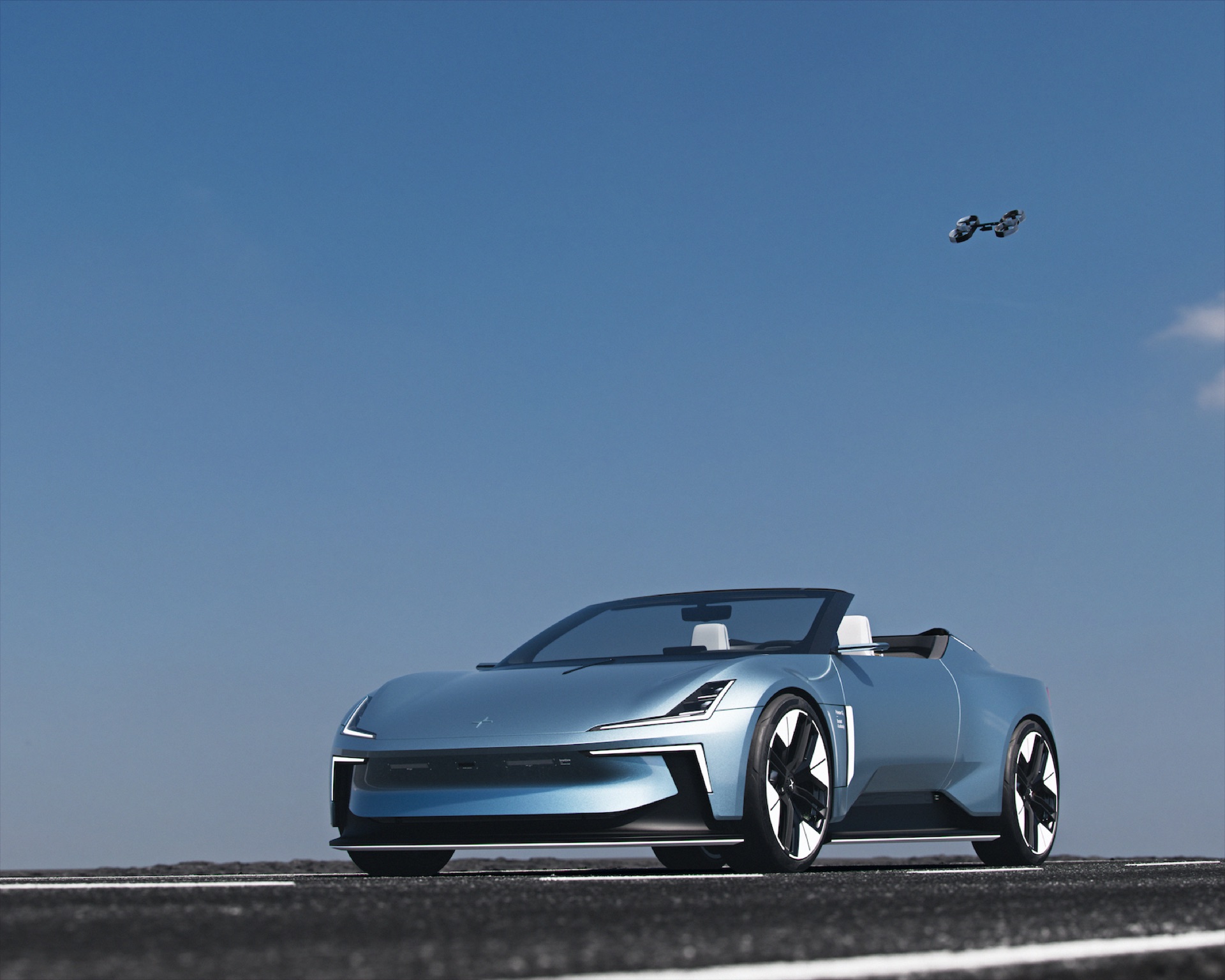Cars that autonomously launch drones—years ago, this would have sounded like a thriller set in a distant future. However, these electric aerial flyers are now a reality, serving a myriad of diverse functions.
Public interest was piqued when Polestar introduced its near-production study of the O2 in spring 2022. In an era of dwindling convertible models, this electric sun-worshipper came as a true revelation—not just for the summer months. In its closed configuration, the Polestar O2 is a sporty coupé with a wide track, long wheelbase, and short overhangs. At the touch of a button, the two-part roof retracts behind the cabin, allowing all four passengers to enjoy the breeze generated by the more than 400 horsepower electric vehicle. Front and side windows act as a visor, protecting occupants from disruptive air turbulence. Special airflow designs on the vehicle ensure that the range of this open-top electric vehicle is minimally impacted.
Instead of conventional wing mirrors, the Polestar O2 is fitted with all-around cameras. But that’s not all. Once the roof of the O2 is open, passengers can not only feel the wind in their hair but can also launch a drone. The drone can be launched at speeds of up to 90 km/h even while the car is in motion. The concept drone, developed in collaboration with consumer electronics brand Hoco Flow by Aerofugia, can be utilised to record driving sequences or explore the surroundings during the journey. Upon completing its mission, the drone autonomously returns to the vehicle. Conveniently, when parked, video clips can be edited and shared directly via the central 15-inch display in the Polestar O2.
Taking drone functionality a step further are the drones that autonomously embark on extensive explorations from within the Hyundai Staria. While the Polestar O2’s reconnaissance drone is still a vision of the future, this family van, commissioned by the Technical University of Munich, is already operational. From the outside, the Staria appears to be a standard family van, but in reality, it is part of a research project centred around robotics, particularly their practical applications. Onboard the family Hyundai are multiple aerial drones, an underwater drone that resembles a mini-submarine, and a land robot named Husky.
Prof. Dr Sami Haddadin of TU Munich says, “They are designed for environmental monitoring and are constructed in such a way that no special robotics expertise is required for their operation.” The list of applications is long and ranges from detecting environmental pollution to investigating mined or contaminated areas. The vehicle, named Svan, serves as a robotics hub, charging station, computing centre, and command post all in one. The aerial drones monitor from above and explore the terrain. Uniquely, drone pilots can control multiple flying devices automatically, thereby mapping an area more quickly and efficiently. If hazardous materials are detected in a body of water, for instance, the underwater drone comes into play. It features a manoeuvrable gripping arm and is also controlled from within the Svan—using an Xbox controller.
However, drones can undertake even more perilous tasks. The armoured Brabus Invicto, based on a Mercedes G-Class, is not only prepared for heavy gunfire and grenade attacks but can also scout potential danger zones in its vicinity using a drone.

The armouring of the 4.82-metre-long vehicle is provided by a specially developed protective cell, which is self-contained and securely bolted to the bodywork.
Various levels of armour are supported by high-tech features that set new standards even for a fortified G-Class. Special forces from the police, border security, or other agencies receive with the Invicto Mission an armoured vehicle specifically tailored to their unique requirements. This includes not only the heavy armour of the car itself but also details like a retractable roof hatch, remote-controlled searchlights, and a remote-controlled reconnaissance drone that can see where the vehicle has not yet ventured. Consequently, the armour rated VR6 Plus—which can withstand bullets from a 7.62 x 39 calibre AK-47 assault rifle or hand grenades with explosive charges up to 12.5 PETN—may not even have to be deployed.




























